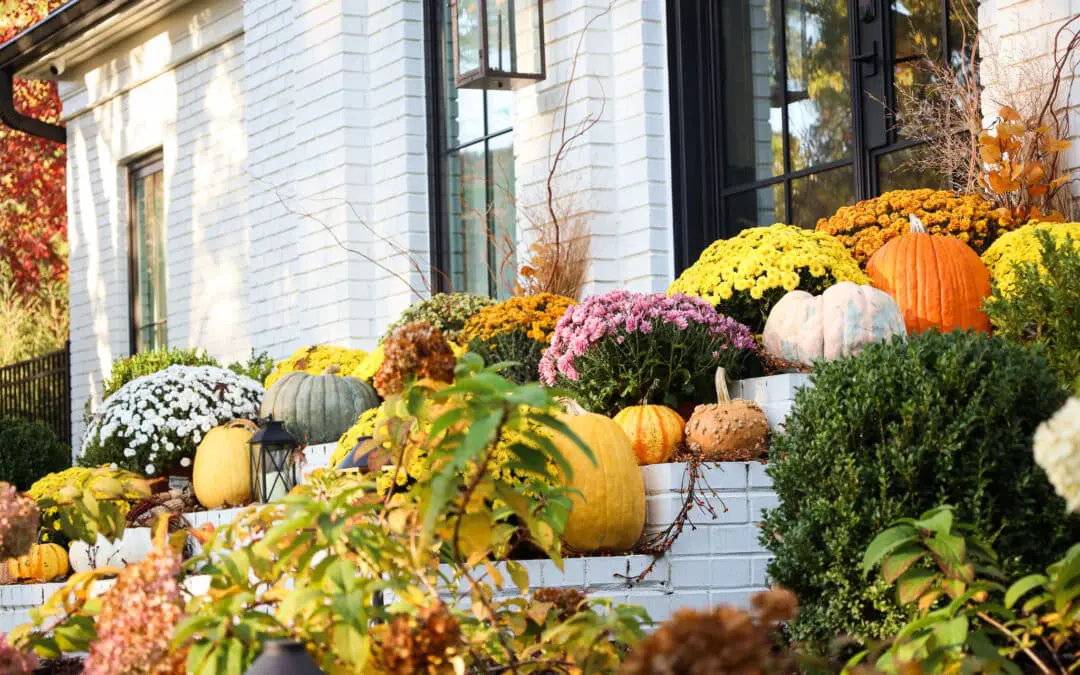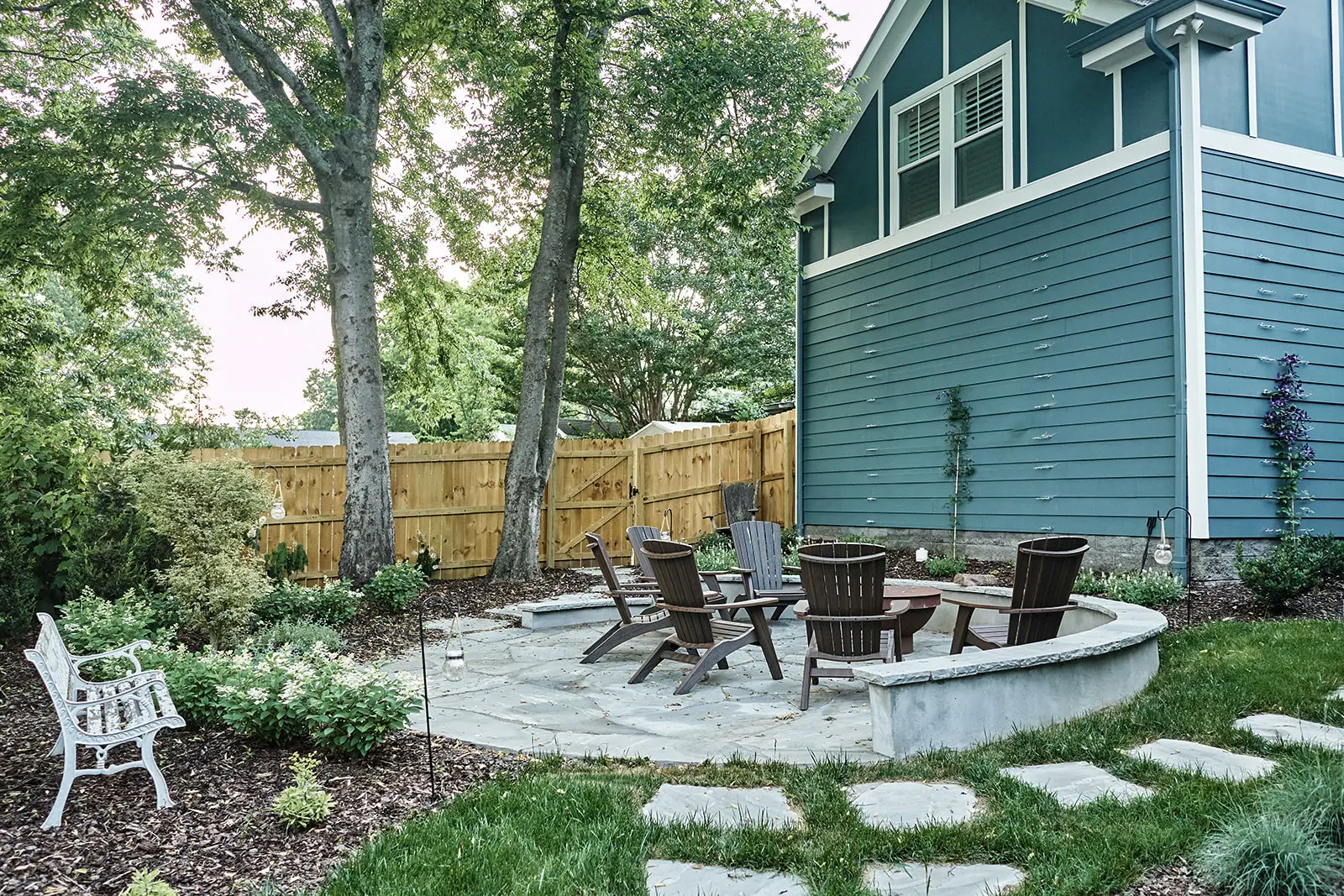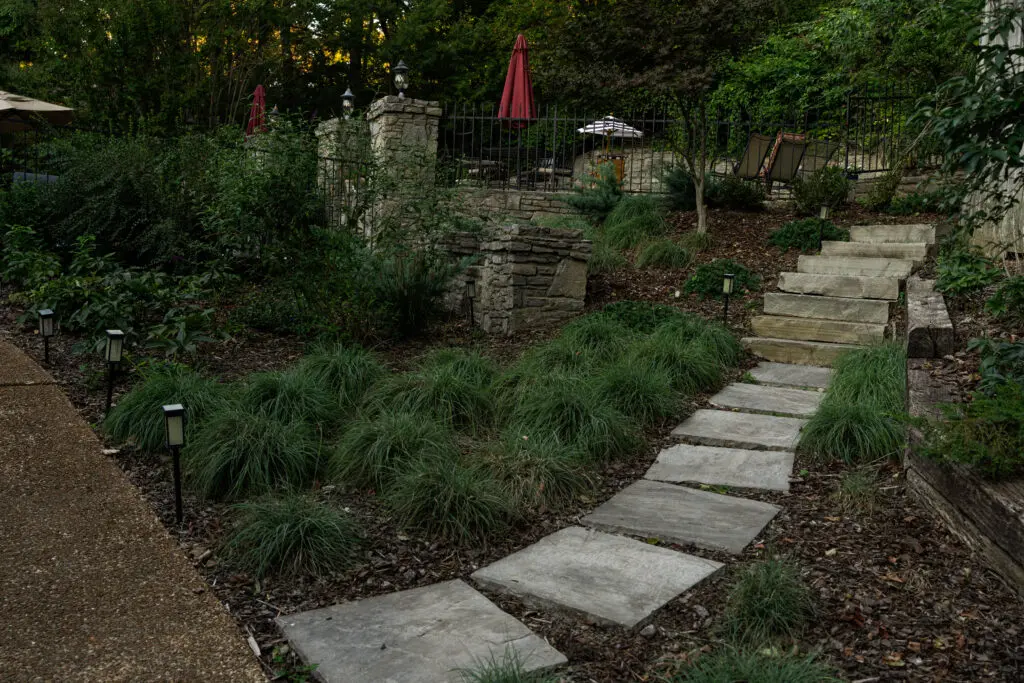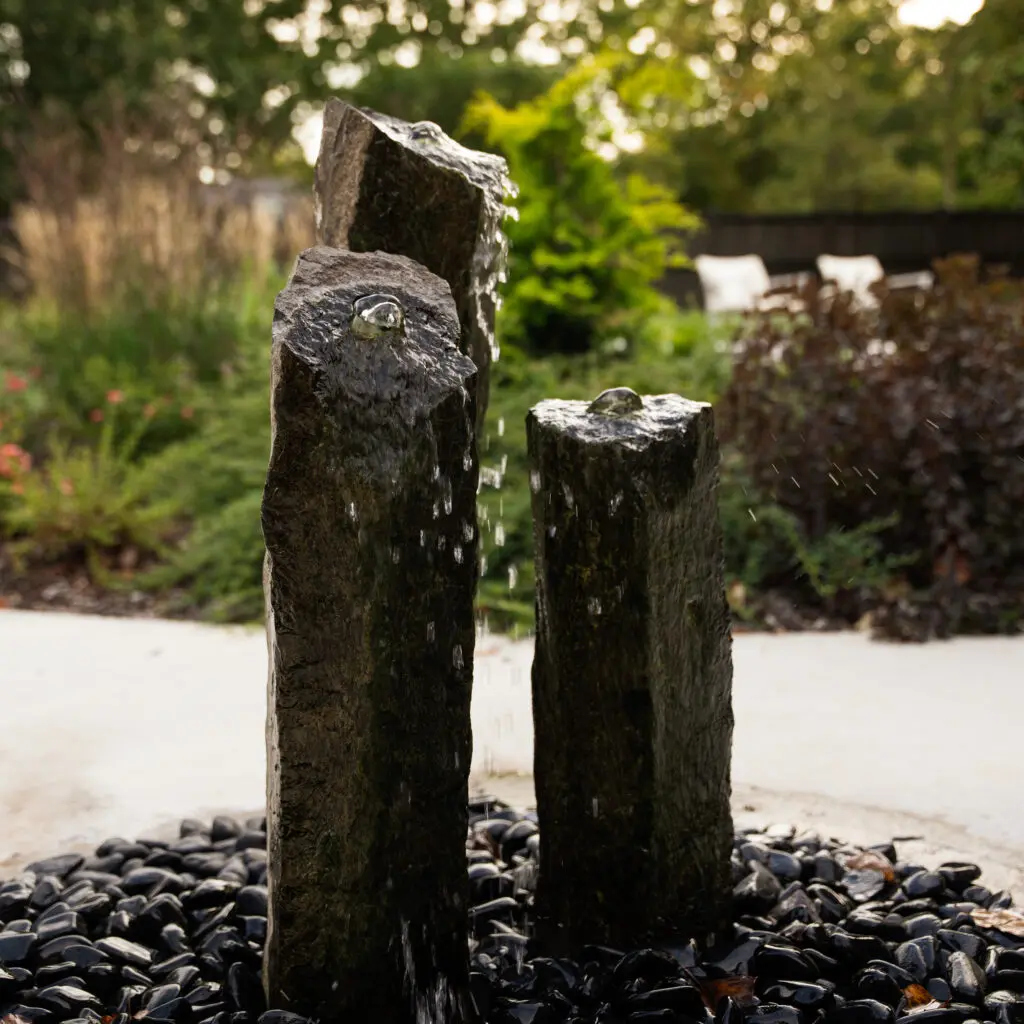
by Gardens of Babylon | Oct 30, 2024
–
As we move into November, many people overlook this time as an opportunity for planting. However, fall and winter can be excellent seasons for enhancing your outdoor space. During these cooler months, many deciduous trees, shrubs, and perennials enter a dormancy phase, making it an ideal time for transplanting. This dormancy period is beneficial for establishing new plants, as it minimizes stress and increases their chances of thriving come spring.
–

The Winter Planting Advantage: Dormancy and Root Development
- Dormancy Unleashes Strength: Winter marks the dormancy phase for many plants, a time when they conserve energy by slowing down their above-ground growth. This dormancy is advantageous for transplanting, as it minimizes stress on the plant and increases its chances of successful establishment.
- Roots Get a Head Start: While the above-ground parts of plants take a breather during winter, their roots remain active. Planting during this time allows roots to establish themselves in the new soil, ensuring a strong foundation for robust spring and summer growth.
The Winter Chill: A Natural Pest Control Mechanism
In the winter landscape, the drop in temperatures serves as a natural ally in the ongoing battle against pests. As the cold sets in, many insects, fungi, and harmful microorganisms either become dormant or experience a slowdown in their activity. This seasonal dormancy acts as a deterrent, minimizing the prevalence of pests that could otherwise pose a threat to the well-being of your plants. The decreased activity of potential invaders during winter not only reduces the immediate risk of infestations, but also curtails the spread of diseases that might otherwise compromise the health of your fruit trees, shrubs, and perennials. Opting for winter planting strategically capitalizes on this environmental advantage, providing your newly introduced plants with a head start towards robust growth. By establishing themselves during a period of reduced pest pressure, your plants can channel their energy into building strong root systems and adapting to their surroundings. This stress-free initiation allows them to focus on fortifying their resilience, ensuring they enter the subsequent growing season with a solid foundation for vibrant foliage, blossoms, and, in the case of fruit-bearing varieties, a promising harvest. In essence, the winter chill not only bestows a seasonal reprieve on your garden but also sets the stage for a healthier and more flourishing landscape in the seasons to come.
Selecting the Right Plants for Winter Planting
Discovering the perfect plants for winter planting is the key to a resilient and beautiful garden. From apples to lavender, find straightforward insights to ensure a successful and thriving winter landscape.
- Fruit Trees for Winter Delight: Explore the world of fruit trees that thrive when planted in winter. From apple and pear trees to peach and cherry varieties, discover which fruits are the perfect match for your winter garden aspirations.
- Shrubs: The Backbone of Winter Landscapes: Uncover the versatility of winter-friendly shrubs. Whether you’re aiming for vibrant blooms, evergreen foliage, or decorative berries, winter planting opens up a world of possibilities.
- Perennials That Brave the Cold: Not all perennials shy away from winter – some embrace the chill with resilience and grace. Learn about perennials like lavender, sedum, and ornamental grasses that thrive when planted during the colder months.
Winter Planting Tips and Techniques
- Prepare the Soil: Despite the chill, soil preparation is key. Understand the importance of well-draining soil, compost, and other amendments to create a welcoming environment for your new plants.
- Proper Mulching: Mulching isn’t just for summer – it plays a crucial role in winter too. Explore the benefits of mulch in retaining soil moisture, regulating temperature, and protecting roots during colder spells.
- Watering Wisely: Believe it or not, winter doesn’t mean plants don’t need water. Water only when air temperatures are above 40 degrees F. Apply water at mid-day so it will have time to soak in before possible freezing temperatures at night. A solid layer (persisting for more than a month) of ice on lawns can cause suffocation or result in matting of grass.
Ready to enhance your outdoor space? Let us do the heavy lifting! Our skilled maintenance and landscaping teams can tackle any landscaping project. Let us know what you’re looking and we can get started!

by Gardens of Babylon | Oct 9, 2024
Here’s good news for gardeners who feel they missed their chance to establish a garden in Spring: Fall is here.
While Spring traditionally opens the gardening season, many gardeners are aware that Fall is great for planting. In October, the soil is still warm from Summer heat while the air begins to cool, creating the perfect environment for healthy root growth. “This, combined with declining pest and disease populations is a recipe for success,” horticulture experts at the University of Tennessee Institute of Agriculture explain. “Work and planning now will pay off in the Spring with strong healthy plants growing beautifully in a home garden.”
And after the long, sweltering Summer, cooler weather brings you back out to enjoy the outdoors again. Think of it as the garden’s “second season.” What to plant? You may be surprised at what thrives in a Fall garden.
Shrubs and trees
Fall and Winter months are a good time to plant shrubs and trees. Spring-planted shrubs need to be watched and watered regularly as the weather gets warmer and they establish themselves in the ground during the growing season. Planted when they are dormant, trees and shrubs can put their energy into establishing good root systems before they begin active growth again next Spring.
Water trees and shrubs at planting time and throughout the season while it’s still warm and dry, but decrease watering as the weather begins to turn cold.
Perennials
Those coneflowers, daylilies, peonies and other Summer-blooming perennials may not look their best in the garden center right now, and they certainly won’t bloom this year. But planting them now gives them a chance to grow quickly into the still-warm soil before frost arrives.
A layer of mulch at planting time will help keep the soil moist, and should protect the new plants from being pushed out of the ground during Winter’s freezing and thawing. Next Spring, Fall-planted perennials will emerge as strong, healthy plants.
Kitchen garden
In early fall, many kitchen-garden veggies begin to fade, but the opportunities for those garden beds don’t come to an end. As you pull out the declining squash and cucumber vines, you can make space for vegetables that thrive in cooler weather, allowing you to enjoy homegrown produce throughout the fall and, in some cases, well into winter. Consider the possibilities!
- Leafy vegetables: Lettuce, spinach, kale, chard and other leafy greens planted early Spring grow quickly when the soil is cool, and go to seed and die back as the weather warms up. Planted now, though, as weather begins to cool, these leafy greens will again thrive.
- Root vegetables: Once they sprout, carrots, turnips and radishes grow fairly quickly, and continue to survive even through frosty Fall nights.
- Cole crops, or brassicas: Broccoli, collards, cabbage, kale, bok choy, and others are among the cool-season vegetables that thrive in fall and are tough enough to withstand the colder weather ahead.
Tips for success
As we settle into October, the cool weather of fall is starting to take hold in Middle Tennessee. Ensure that new plants receive plenty of water at planting time and throughout the season to help establish their roots before winter. Mulch is also beneficial for retaining soil moisture and protecting plant roots (just be sure not to pile mulch around the trunks of trees and shrubs).
In kitchen gardens, be aware that the transition to cooler temperatures can still present challenges. Seed germination may be affected by lingering warm spells, and summer pests and fast-growing weeds can hinder your efforts. Stay vigilant and care for your fall-growing vegetables from planting to harvest.
*
Ready to enhance your outdoor space this Fall? Let us do the heavy lifting! Our skilled maintenance and landscaping teams can tackle your Fall landscaping project. Let us know what you’re looking for to get started.

by Gardens of Babylon | Sep 5, 2024
As we say goodbye to summer, it’s the perfect time to reflect on your landscaping and garden care. Fall offers a prime opportunity for planting and preparing your landscape for the colder months. Here are some essential September landscaping tips to help you transition smoothly into fall and get ready for winter:
- Plant Fescue Grass: Choose a drought-tolerant fescue variety and plant or over-seed existing lawns if needed. Opt for organic lawn care practices to ensure your lawn thrives without harmful chemicals.
- Apply a Natural Pre-Emergent Herbicide: To prevent broadleaf winter weeds, consider applying a natural pre-emergent herbicide like corn gluten meal by the end of the month. Remember to skip this step if you plan to over-seed your cool-season grass.
- Aerate Your Lawn: Aerating your lawn helps improve soil health by loosening compacted soil, allowing air, water, and nutrients to reach the roots. This natural process encourages healthy grass growth in the fall.
- Plant Trees and Shrubs: Fall is the ideal time to plant native trees and shrubs, which are better adapted to local conditions and support local wildlife. These plants will establish strong roots before winter, contributing to a sustainable landscape.
- Avoid Fall Pruning: Preserve your spring-flowering trees and shrubs by avoiding pruning in the fall. This not only protects the blooms but also allows the plants to maintain their natural growth patterns.
- Trim Dead or Damaged Wood: Remove dead or damaged branches from trees and shrubs with care, but avoid drastic pruning. This supports the plant’s natural structure and health.
- Manage Rose Diseases Organically: Use natural fungicides like neem oil or baking soda solutions to manage black spot and powdery mildew on roses, minimizing chemical use in your garden.
- Monitor for Fall Webworms: Keep an eye on pecans, crabapples, and other susceptible trees for fall webworms. If necessary, trim out webs or use eco-friendly treatments like Bacillus thuringiensis (Bt) to control infestations.
- Sow Native Wildflower Seeds: Plant native wildflower seeds to support pollinators and enhance biodiversity. Press them into the soil surface to improve germination naturally.
- Divide and Replant Perennials: This is the perfect time to divide and replant spring-blooming perennials like Iris, Yarrow, and Daylilies.
- Adjust Your Watering Schedule: As temperatures drop, adjust the watering for your lawn, shrubs, flowers, and containers. Be especially mindful of containers, as they can become waterlogged.
At Gardens of Babylon, we’re here to help you with all your fall landscaping needs. Whether it’s planting fescue grass, aerating your lawn, planting trees and shrubs, or even adjusting your watering schedule, our team of experts has you covered. Let us take the guesswork out of your fall garden and lawn care, so you can enjoy a beautiful, thriving landscape all year round!
To begin your next landscaping project, book a consultation!


by Gardens of Babylon | Sep 5, 2024
As the days grow cooler and the nights crisp, you might find yourself thinking about adding a patio to your outdoor space. Whether you have a sprawling lawn or just a small area outside your back door, now is the perfect time to consider creating an outdoor “room” where you can enjoy the beauty of every season.
“A patio can be your personal retreat,” says Eric VanGrinsven, a landscape designer with the Gardens of Babylon design team. Our designers excel at crafting unique patio spaces that seamlessly integrate with your overall landscape design. Today’s patio trends range from cozy, intimate corners to expansive outdoor living rooms and kitchens that are perfect for entertaining.
Surface Matters: The Foundation of Your Patio
The foundation of any great patio starts with the surface. “Many of my clients are looking for patios that are both clean and easy to maintain,” says landscape designer Max Finkbeiner. “Natural stone or clay pavers are popular for their timeless appeal, but we also see a demand for simple, sharp, and elegant concrete options that offer a cost-effective solution.”
Stamped and dyed concrete, often in natural stone patterns or herringbone designs, is another popular choice. It’s easier to clean and maintain, with a lower upfront cost, making it an attractive option for many homeowners.
Flagstone patios continue to be a favorite for those who love a more organic look. “I find that clients are increasingly drawn to natural stone slab patios with gravel joints,” notes landscape designer Ryan Fogarty. “These joints are wider and irregular, offering a permeable surface that’s both functional and aesthetically pleasing.”

Warming Trend: Extending Outdoor Use into Cooler Months
As the weather cools, patios designed for year-round use become even more appealing. Many clients want a patio that’s versatile – great for summer barbecues and games, but also perfect for gathering around a fire pit in the cooler months.
The challenges of recent years have made fire pits a must-have feature for outdoor spaces. Fogarty has noticed a significant increase in requests for built-in wood-burning or gas fire pits. “Whether it’s a rustic stone design or a sleek modern setup, fire pits with seating walls create a cozy outdoor environment,” she explains. Gas-fired options offer the convenience of a fire at the flip of a switch, without the hassle of wood.
More recently, flexibility has become key in patio design. “Portable fire pits, like Solo Stoves, are increasingly popular,” Fogarty adds. “Clients appreciate the ability to move the fire pit, allowing their patio to serve multiple functions depending on the season.”

Dining with Friends: Outdoor Kitchens for Every Space
No patio is complete without a space for dining. Even if your patio is small, a simple setup with a grill, table, and chairs can transform your outdoor area into a delightful dining spot. If you have more space and a larger budget, the possibilities are endless. Think outdoor refrigerators, sinks, fireplaces, and even pizza ovens.
For larger outdoor kitchens, our designers emphasize the importance of counter space. You can never have too much counter space and it often becomes the gathering spot for guests. Adding shelter, like a pergola or covered porch, can also enhance your patio’s functionality. “My clients tend to prefer simple, modern pergola designs,” Finkbeiner notes, which offer both shade and style.

Plan Your Patio with Gardens of Babylon
As you plan your perfect patio, remember that it’s more than just an addition to your landscape—it’s an extension of your home. Whether you’re envisioning a small, peaceful retreat or an expansive outdoor entertaining space, our Gardens of Babylon landscape design team is here to help bring your vision to life. Book a consultation with one of our professionals today and start enjoying your outdoor space in every season.

by Gardens of Babylon | Aug 23, 2024
As cooler weather settles in across Middle Tennessee, it’s the perfect time to transform your backyard into a cozy retreat that embraces the charm of the season. Here are four Fall project ideas to help you create a warm, inviting outdoor space that’s ideal for those cooler days.
1. Install a Fire Pit or Outdoor Fireplace

Nothing beats the warmth and ambiance of a fire pit or outdoor fireplace on a chilly Fall evening. Whether you’re hosting friends or enjoying a quiet night under the stars, this feature becomes the heart of your outdoor space. Opt for a traditional stone fire pit, or a brick fireplace with seating walls. Surround it with comfortable seating and add a few cozy blankets for the ultimate outdoor hangout spot.
2. Create Pathways and Walkways

Enhance the functionality and beauty of your backyard by adding pathways or walkways. Fall’s stable ground conditions are ideal for laying pavers, bricks, or stepping stones. These paths not only guide guests through your garden but also add structure and style to your landscape. Consider lining the paths with low-growing plants and lights to create a welcoming glow as the days grow shorter.
3. Add Outdoor Lighting

As daylight hours decrease, outdoor lighting becomes essential for extending the usability of your backyard. String lights, lanterns, and pathway lights can create a magical atmosphere that’s perfect for Fall evenings. Highlight key features like trees, seating areas, and walkways to create a layered lighting effect.
4. Add a Fountain

The calming sound of a bubbling fountain is the perfect element to up the ambiance of your patio! The gentle sound of flowing water can drown out unwanted noise and create a peaceful ambiance that soothes the soul.
–
At Gardens of Babylon, we’re passionate about helping you create the perfect outdoor space for every season. Whether you’re dreaming of a cozy fire pit, a vibrant spring garden, or a beautifully lit patio, our team of experts is here to bring your vision to life. Fall is the ideal time to tackle these projects, so don’t wait—contact us today to schedule a consultation and start your backyard transformation. Let’s make your outdoor space a place you’ll love all year round!















